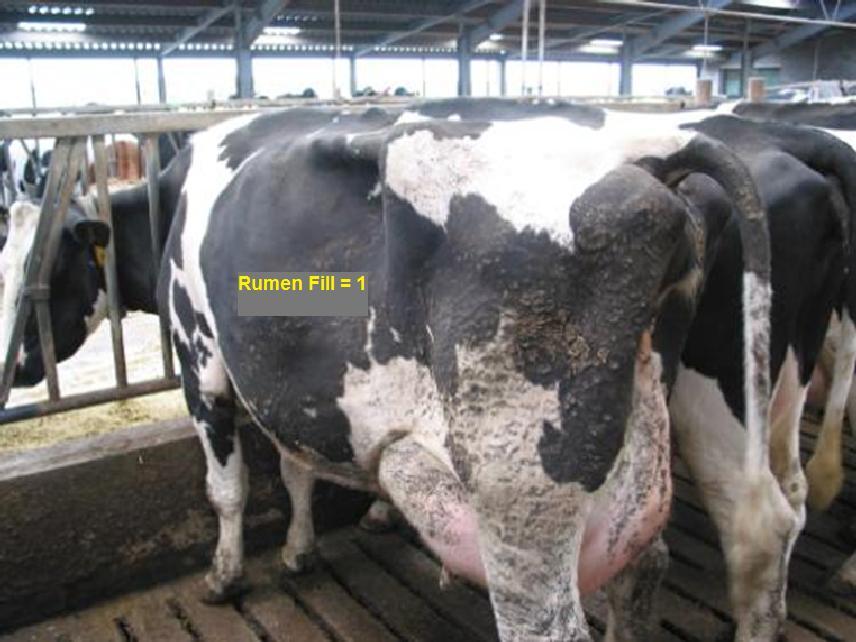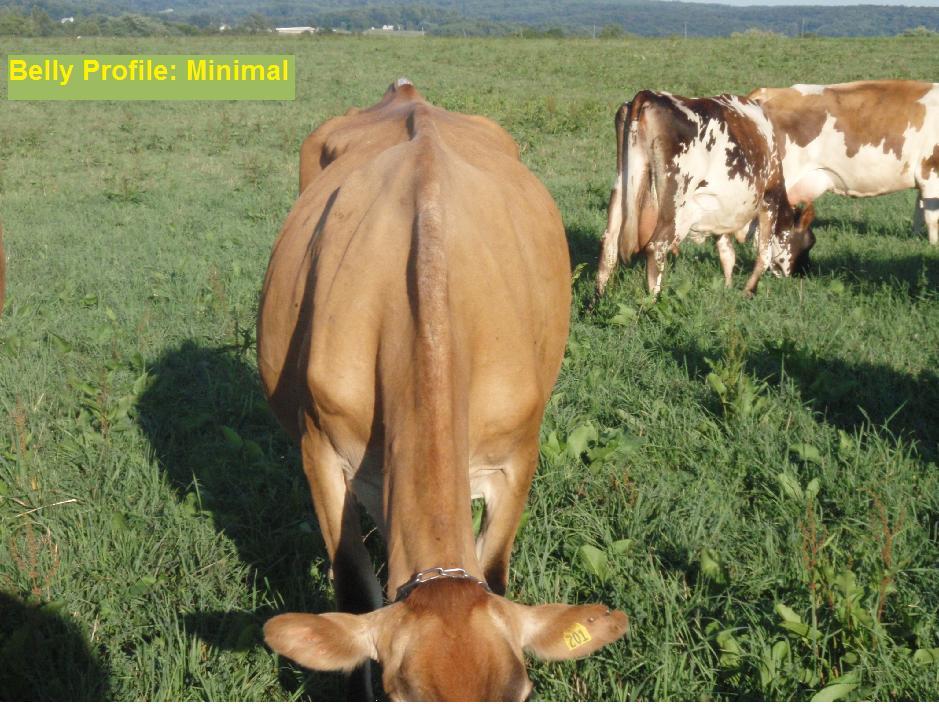2013 Northeast Pasture Consortium Annual Meeting Northeast Pasture Research and Extension Consortium 2016 Annual Meeting, Manchester, NH, February 6-7, 2013
With the impending snowstorm bearing down on Manchester, Session 5, Grain Supplementation Economics and Strategies for Pasture Dairy Cows began right after Mark Russell’s presentation. Dr. Andre Brito moderated this session. Andre introduced Dr. Hubert Karreman, DVM, Organic Valley CO-OP, Penn Dutch Cow Care, Lancaster, PA. Dr. Karreman presented Reading and Feeding Cows on Pasture. He started out his presentation using a diagram called CowSignals as an introduction into the consequences of grain supplementation.

When looking at livestock, look at familiar things from a different perspective. Know the difference between looking versus seeing. Then, be sure you do something with this information to stay ahead of a possible problem. He recommended attending a CowSignals Workshop. It engages grass farmers to see more about cows and learn why things happen to ensure having healthy cows making more milk.
Cows don’t speak but they can tell us a lot. Cows want the 6 freedoms that pasture offers as shown in the diagram above. Adequate dry matter intake (DMI) and water equal optimal milk production. A cow tells you about her DMI. A cow with adequate DMI is alert, has a full rumen, a full belly, and a good body condition score. A full rumen signals adequate DMI today. The body profile showing a full belly indicates adequate DMI over the past week. Body condition score tells you how much feed the cow has gotten over the past month or more.
Rumen fill reflects DMI and rate of passage. Very succulent forage will have a high rate of passage and high water content making it hard to achieve rumen fill. Rumen fill is determined by the area below the short ribs and its relationship to the short ribs and the last large rib. Rumen fill of 1 - this area is sunken and is called an empty triangle, as it forms a noticeable triangular area between the bones that surround it. A hand’s width fits inside under the transverse processes and the area cavitates a hand’s width behind last rib.

A rumen fill of 2 is still a noticeable triangle, but less than a hand’s width fits inside under the transverse processes, but the area still cavitates a hand’s width behind the last rib. At a rumen fill of 3 the cow’s hide falls about a hand’s width vertically down below short rib and then bulges out. The area cavitates less then a hand width behind last rib.

At a rumen fill of 4, the cow’s hide arches out immediately below the short ribs. Skin is covering the area behind it and bulges out directly. Lastly, at rumen fill 5, short and last ribs are not at all visible.
Rumen fill ratings of 1 or 2, the cow is not getting enough feed today. Ratings 3, 4 or 5, the cow is getting enough feed today.
Not all cows eat the same amount of feed, because they can’t all eat at the same time. Low ranking cows can be at risk, because they are intimidated by boss cows at feed bunks. Another reason for pasture as one of the 6 freedoms is space. Boss cow cannot guard all the forage, all the time. A low ranking cow is an indicator cow and bears watching closely for rumen fill and belly profile.


Body condition score must be good to show heats for artificial insemination. Other signs to watch for are watery bowel movements (fiber lacking in ration, rate of passage too fast) and all cows in the shade (heat index too high). Whole herd standing in the shade and not eating. They may as well be back at the barn that has a fan to cool them.
Hubert also gave some methodology for figuring paddock sizing similar to what Don Wild described in Session 1. This lead into grain supplementation thoughts. He thought minor breeds and crossbreds respond well under low grain or no grain. The more grain fed in the ration; the higher than omega 6 to omega 3 ratio is. This is not good from a human dietary standpoint when the milk is consumed.
He cited some work being done by Organic Valley looking at the difference between organic milk from pastured cows versus conventionally fed cows’ milk in fatty acid content, principally omega-3 and omega-6. Organic Valley milk had a much lower ratio of omega-6 to omega-3 of 2.17:1 than conventional milk, 5.26:1 on average. There was a wide variation in these ratios depending on region of the country, however. Pasture fed cows produce very low omega-6 to omega-3 ratios of 1.0 to 1.2.
In another study, grain feeding seems to depress levels of omega-3 and conjugated linoleic acid (CLA) in milk while feeding no grain causes levels of the two to rise. CLA levels in milk peak in July from cows fed no grain. Meanwhile, omega-6 and polyunsaturated fatty acid are much higher for grain than no grain milk.
However, interestingly there is a reverse trend between grain fed and no grain cow’s milk, levels of the two fatty acids being higher early in the grazing season under a no grain ration while being higher in September before dropping off in October with grain fed pastured cows. The difference in omega-6 to omega-3 ratios over 9 farms’ milk being tested showed the ratio going from 1.0 for no grain to a ratio of about 3.0 at 18 pounds of grain fed daily as a straight line function.
It would seem that there are differences in fatty acid composition in milk, if not in other nutrients, between pasture-fed cow’s milk and conventional fed cows. From this data, it also shows there are differences in fatty acid content of milk from pasture cows fed no grain and those fed grain while on pasture.